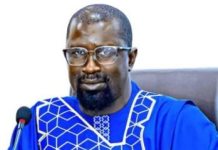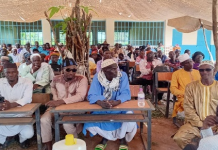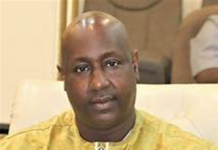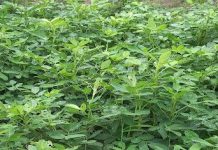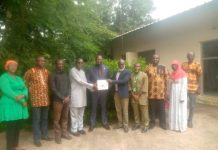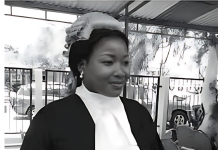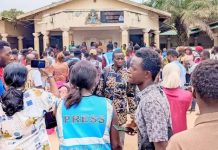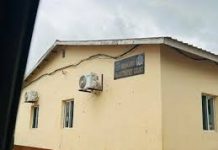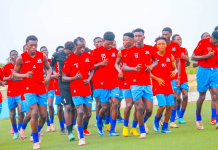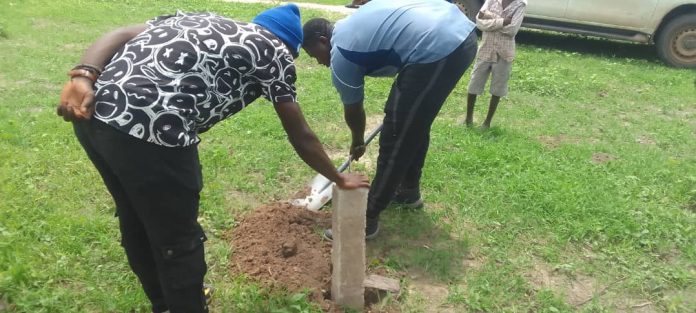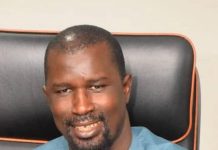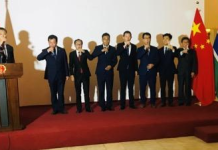By Hatab Nyang and Louise Jobe
The Department of Lands and Surveys has entered the second stage of a sensitive and long-standing boundary demarcation exercise between the coastal settlements of Gunjur and Berending, an initiative that has rekindled local land disputes and raised concerns over historic ownership claims.
On Thursday, July 17, 2025, surveyors erected eight intermediate poles marking boundary points between key demarcation sites. According to the department, these poles are spaced approximately 100 meters apart and are intended to clarify the dividing lines between the kabilos—family-based landholdings that structure much of rural property ownership in The Gambia.
The exercise commenced from Yorroff, also known as Mafina Kutoto, a settlement adjoining Gunjur Misira. The demarcation line crosses the Berending highway and extends toward an agricultural field reportedly owned by the Darboe Kunda family. Officials emphasized that poles should not be placed within occupied compounds and must be adjusted to avoid encroaching on residential properties.
“This stage is crucial because intermediate points help define the specific separation between family lands,” said Mr. Bunja Janneh, a senior officer from the Department of Lands and Surveys, who oversaw the installation process. “We advise our coordinators to avoid situating boundary poles inside people’s living compounds, and instead erect them just outside.”
The total distance covered by the newly erected poles—from the first key point to the most recent pole—was not immediately provided, though officials indicated the exercise will continue on Monday, July 21, 2025.
Despite its technical nature, the demarcation effort has provoked tensions among community members. Mr. Lamin Jammeh, a native of Gunjur and a representative of the Jammeh Kunda family, strongly refuted claims made by Mr. M.K. Juwara, a Berending resident who has publicly criticized the process.
“What Mr. M.K. Juwara says about the boundary demarcation going in a different direction is misleading and untrue,” Mr. Jammeh stated. He recounted a 1998 court case in which the Juwara family, together with other Berending residents, brought a legal action against the Jammeh Kunda family over the land in question. That case, he said, was decided in favor of the Jammeh Kunda family by the Brikama Magistrates’ Court, and the ruling was subsequently enforced by the High Court.
“The sheriff of the High Court gave the title to Jammeh Kunda,” Mr. Jammeh added. “Both the Juwara Kunda and some people of Berending were served with eviction letters. Since then, the area has belonged to the Jammeh Kunda family.”
In recent remarks, Mr. Juwara claimed that the ongoing boundary demarcation was affecting “hundreds” of residents from neighboring Kartong. Mr. Jammeh dismissed the allegation as “false and misleading,” arguing that the Jammeh Kunda family has maintained peaceful borders with nearby Kartong communities for over half a century.
“Jammeh Kunda shares borders with Kartong’s Touray Kunda and Manneh Kunda, and we have never had issues with them,” he said. “Mr. Juwara is trying to involve the people of Kartong in his own fight.”
He went on to assert that there is no such thing as communal land ownership in The Gambia, only individual and kabilo-based holdings. “Lands are owned by individuals, families, and homes—not the community,” Mr. Jammeh emphasized.
“No one from Touray Kunda or Manneh Kunda is complaining about this demarcation exercise,” he added. “Only a single person is making these claims and falsely alleging that hundreds of people from Kartong are affected.”
As the demarcation process moves forward, community tensions remain high, with old grievances resurfacing amid efforts to clarify legal boundaries. The Department of Lands and Surveys has yet to publicly comment on the historical disputes, though officials appear intent on pressing ahead with the mapping exercise.
The next phase of the project is scheduled to begin on July 21, with further installations expected to mark the remaining boundary areas. It remains to be seen whether ongoing tensions will subside—or escalate—as lines continue to be drawn.


